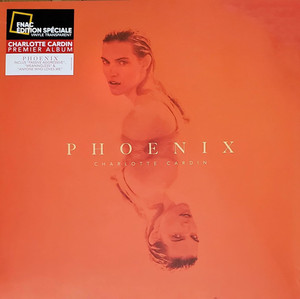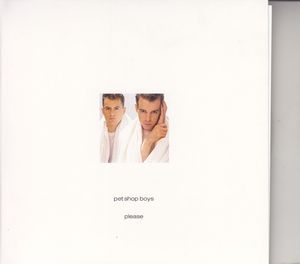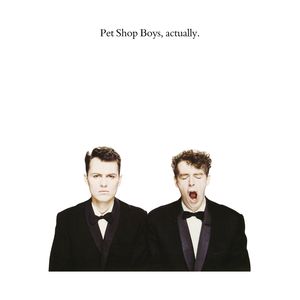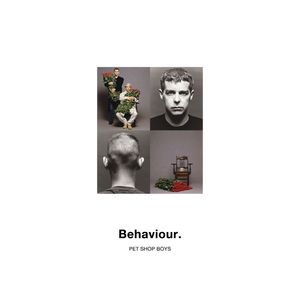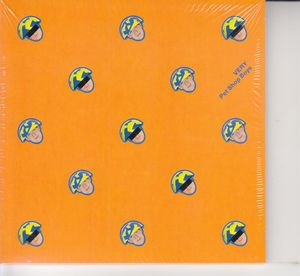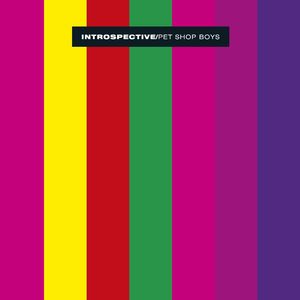Фирма Parlophone
Артикул: CDVP 4113893
EAN: 0190295000486
Состав: 1 LP
Состояние: Новое. Заводская упаковка.
Дата релиза: 23-04-2021
Лейбл: Parlophone
Жанры: Electro Electronic Hip Hop
Артикул: CDVP 4108128
EAN: 5021732830470
Состав: 2 LP
Состояние: Новое. Заводская упаковка.
Лейбл: Parlophone
Исполнители: Duran Duran / Duran Duran
Жанры: Electronic New Wave Pop Synth-pop
Артикул: CDVP 4107244
EAN: 5021732727138
Состав: CD
Состояние: Новое. Заводская упаковка.
Дата релиза: 25-09-2025
Лейбл: Parlophone
Исполнители: Pet Shop Boys / Pet Shop Boys
Жанры: Electronic Pop Rock Synth-pop
Успеху альбома способствовал предварявший его сингл «West End Girls», который занял первые места во многих странах, включая Великобританию и США и был сертифицирован как золотой. В 1987 году Please выиграл премию BRIT Award за лучший сингл и премию Ivor Novello Award за лучший международный хит.
Всего на сегодняшний день продано более трех миллионов копий Please.
Артикул: CDVP 4107243
EAN: 5021732727145
Состав: CD
Состояние: Новое. Заводская упаковка.
Дата релиза: 25-09-2025
Лейбл: Parlophone
Исполнители: Pet Shop Boys / Pet Shop Boys
Жанры: Electronic Pop Rock Synth-pop
Альбом включает хиты группы «It's A Sin», «Rent», «Heart» и дуэт с Дасти Спрингфилд «What Have I Done To Deserve This?». В чартах Великобритании «Actually» занял второе место, в Западной Германии — первое.
Actually был спродюсирован Джулианом Мендельсоном, Стивеном Хейгом, Шепом Петтибоуном, Энди Ричардсом и Pet Shop Boys. В этот период Pet Shop Boys достигли новых высот, как в коммерческом плане, так и в плане критиков, с тремя синглами № 1 в Великобритании: «It's A Sin», «Always On My Mind» и «What Have I Done To Deserve This?», который они записали с Дасти Спрингфилд. Дуэт получал восторженные отзывы критиков. Нил Теннант писал: «В то время я чувствовал, что мы открыли секрет современной поп-музыки, что мы точно знали, что нужно».
Actually включён в книгу «1001 Albums You Must Hear Before You Die». По версии портала Vice альбом занимает 33-ю строчку в списке «99 лучших танцевальных альбомов всех времён».
Артикул: CDVP 4107231
EAN: 5021732727206
Состав: CD
Состояние: Новое. Заводская упаковка.
Дата релиза: 25-09-2025
Лейбл: Parlophone
Исполнители: Pet Shop Boys / Pet Shop Boys
Жанры: Electronic Pop Rock Synth-pop
Behaviour был четвёртым студийным альбомом Pet Shop Boys, записанным в основном в мюнхенской студии сопродюсера Гарольда Фальтермейера. Запись была завершена в лондонской студии Sarm West Studios и окончательно выпущена в октябре 1990 года.
Диск значительно отличается от предыдущих работ дуэта, построенных под сильным влиянием итало-диско и Hi-NRG; здесь же практически ни одна из альбомных композиций не является танцевальной. Behaviour получил лестные рецензии и достиг 2-го места в британском хит-параде.
Артикул: CDVP 4107226
EAN: 5021732727213
Состав: CD
Состояние: Новое. Заводская упаковка.
Дата релиза: 25-09-2025
Лейбл: Parlophone
Исполнители: Pet Shop Boys / Pet Shop Boys
Жанры: Electronic Pop Rock Synth-pop
Альбом Very 1993 года взлетел на первое место в чартах Великобритании, Германии, Швеции и Швейцарии и был продан в количестве пяти миллионов копий по всему миру на сегодняшний день. В альбом вошли пять синглов, включая кавер-версию "Go West" и сингл "Can You Forgive Her?", которые вошли в верхнюю десятку хит-парадов и сопровождались новаторскими видеоклипами.
Артикул: CDVP 4107225
EAN: 5021732727176
Состав: CD
Состояние: Новое. Заводская упаковка.
Дата релиза: 25-09-2025
Лейбл: Parlophone
Исполнители: Pet Shop Boys / Pet Shop Boys
Жанры: Electronic Pop Rock Synth-pop
Выпущенный в 1988 году, Introspective был первым альбомом, спродюсированным звездным продюсером Тревором Хорном, чья роскошная оркестровка также ознаменовала новое направление в звучании Pet Shop Boys. Легенда хауса Фрэнки Наклз смикшировал "I Want a Dog", в то время как Domino Dancing был записан в Майами с продюсером хитов Льюисом Мартине. Кроме того, "Introspective" показал новый подход Теннанта и Лоу к виниловым альбомам и форматам синглов: каждая из всего шести песен альбома длилась более шести минут, и были созданы специальные редакции для обычных форматов синглов 7 дюймов. "Идея заключалась в том, чтобы сделать альбом, где каждая песня была бы синглом", - объясняет Нил Теннант. "И действительно, пять из шести песен были выпущены как синглы".
В чарте Великобритании альбом занял второе место.
Артикул: CDVP 4106490
EAN: 5021732546661
Состав: 2 LP
Состояние: Новое. Заводская упаковка.
Лейбл: Parlophone
Исполнители: Coldplay / Колдплэй
Жанры: Alternative Rock Pop Rock
Артикул: CDVP 4106373
EAN: 5021732521286
Состав: 1 LP
Состояние: Новое. Заводская упаковка.
Лейбл: Parlophone
Исполнители: Coldplay / Колдплэй
Жанры: Alternative Rock Electronic Pop Pop Rock Rock Synth-pop Synthwave
Не от мира сего
Объявив об этом с помощью рукописной записки в Instagram и межгалактического трейлера под названием "Overtura", в 2025 году Coldplay официально объявили, что выпустят свой новый, девятый студийный альбом в 2021 году.
"Music Of The Spheres" станет продолжением двойного альбома "Everyday Life", занявшего первое место в 2019 году, над которым поп-гиганты работали со звездным продюсером Максом Мартином, которого группа уже назвала "настоящим чудом Вселенной".
Крис Мартин и ко написали и записали для него двенадцать песен, включая лид-сингл "Higher Power", который Coldplay выпустили еще в мае, и сингл "Coloratura", который вышел в июле. Следующий сингл с альбома должен выйти в сентябре.
Космическая тема проходит через весь альбом, начиная с названия и обложки. Пять из двенадцати треков "Music Of The Spheres" также представлены на этот раз преимущественно космическими эмодзи. Это может показаться знакомым поклонникам Coldplay. Группа также показала видео с аудиовизуализатором на свою песню "Higher Power", которую они сами описали как форму "внеземной передачи", французскому астронавту Томасу Песке из Европейского космического агентства на борту Международной космической станции МКС, прежде чем она была официально выпущена.
В их сообщении о новом альбоме также говорится: "Спасибо вам за то, что вы слушаете, посещаете концерты или любые другие способы, которыми мы познакомились через музыку" Мы должны поблагодарить вас.
PS: Вот макси-диск "Higher Power".
Группа Coldplay была основана в 1996 году Крисом Мартином, Джонни Баклендом, Уиллом Чемпионом и Гаем Берриманом. В том же составе они выступают и сегодня. Британские поп-рокеры выпустили свой дебютный альбом "Parachutes" в 2000 году и на сегодняшний день выпустили еще семь студийных альбомов. Все они достигали первого места в британских чартах. Лучшие предпосылки для выхода их девятого альбома "Music Of The Spheres".
Артикул: CDVP 4106361
EAN: 5021732546647
Состав: 1 LP
Состояние: Новое. Заводская упаковка.
Лейбл: Parlophone
Исполнители: Coldplay / Колдплэй
Жанры: Alternative Rock Dream Pop Pop Pop Rock Rock
Coldplay: "Ghost Stories" - новый шестой студийный альбом
Время пришло. Coldplay возвращаются с шестым альбомом "Ghost Stories". в 2012 году они объездили весь мир со своим пятым альбомом"Mylo Xyloto". Затем они записывали новый альбом в собственных студиях в Лондоне до начала 2014 года.
Два предварительно выпущенных сингла "Midnight" (февраль 2014) и "Magic" (апрель 2014) демонстрируют изменившееся звучание. В противовес инструментальной сложности "Mylo Xyloto", квартет представляет уменьшенное, типичное для Coldplay звучание "Ghost Stories". Известные на сегодняшний день истории о призраках имеют тоскливо-меланхоличный оттенок.
В конце марта 2014 года в Калвер-Сити, штат Калифорния, "Ghost Stories" была впервые исполнена вживую перед избранной публикой. Фронтмен Coldplay Крис Мартин поприветствовал публику словами: "Добро пожаловать на мое стендап-шоу" Этой фразой он задает загадку, которая вписывается в истории о призраках: Должны ли мы смеяться над ним? Конечно, нет, ведь он - печальный герой. В песнях "Magic" и "Ink" он поет о трудной, болезненной любви. Такие песни, как "Oceans", действительно требуют от его голоса многого.
Сравнение со стендап-артистом на сцене подходит как нельзя лучше, потому что Крис Мартин - центральная фигура альбома. В "Ghost Stories" он олицетворяет в основном печального героя-любовника от лица всей группы, и не только в клипе на песню "Magic". Идентификация слушателя с рассказанными призрачными историями зависит от голоса вокалиста, который показывает, насколько он многогранен. Он отдает все свои силы и вовлекает нас в истории альбома Coldplay. Вовлекаться в них очень интересно.
От фортепианной баллады "O" до более легких в музыкальном плане песен, таких как "True Love", "Ghost Stories" предлагает широкий простор для интерпретации душераздирающих пустот в историях. И именно это делает группу такой привлекательной, как и ее разностороннее звучание. К счастью, одно остается неизменным: это Coldplay, такие же живые и вдохновляющие, как всегда. Преданные звуки гитар и элегантный вечер песен о любви - так описывает вечер живой премьеры альбома рецензент Rolling Stone.
Тоскливая меланхолия "Ghost Stories" захватывает поклонников Coldplay с самого начала.
Артикул: CDVP 4106360
EAN: 5021732546630
Состав: 1 LP
Состояние: Новое. Заводская упаковка.
Лейбл: Parlophone
Исполнители: Coldplay / Колдплэй
Жанры: Electronic Pop Pop Rock Rock
Пятый студийный альбом Coldplay "Mylo Xyloto" (произносится: ми-ло-зи-лето) был спродюсирован Маркусом Дравсом, Дэниелом Грином и Риком Симпсоном, а композиции написал Брайан Ино. Альбом стал продолжением мультиплатинового альбома "Viva La Vida", который достиг первого места в чартах в 36 странах, включая США и Великобританию.
Группа продала более 50 миллионов записей по всему миру и завоевала множество наград, включая семь премий Grammy®, шесть Brit Awards и четыре MTV Video Music Awards.
Артикул: CDVP 4106359
EAN: 5021732546623
Состав: 1 LP
Состояние: Новое. Заводская упаковка.
Лейбл: Parlophone
Исполнители: Coldplay / Колдплэй
Жанры: Alternative Rock Pop Pop Rock Rock
Альбом является свидетельством творческого развития коллектива друзей из Англии и в очередной раз подчеркивает статус группы, продавшей более 35 миллионов пластинок с момента своего дебюта в 2000 году. Спродюсированные Брайаном Ино (U2/Roxy Music) и Маркусом Дравсом (Arcade Fire), десять новых песен впечатляют своими великолепными, жизнеутверждающими припевами, а также слышимой радостью экспериментов. Ликуете ли вы до небес или опечалены до смерти - на "Viva La Vida Or Death And All His Friends" COLDPLAY впечатляюще перерабатывают все, что находится между этими двумя эмоциональными крайностями, создавая музыку и тексты, которые в очередной раз подчеркивают исключительное положение этой группы в современном музыкальном ландшафте. Группа не цепляется за проверенные формулы, а снова смело смотрит в будущее с этим альбомом. И поэтому нет никаких сомнений в интенсивности и потенциале альбома. как и его предшественники, "Viva La Vida Or Death And All His Friends" будет открыт, покорен, прослушан и любим миллионами поклонников COLDPLAY.
Артикул: CDVP 4106358
EAN: 5021732630889
Состав: 2 LP
Состояние: Новое. Заводская упаковка.
Лейбл: Parlophone
Исполнители: Coldplay / Колдплэй
Жанры: Alternative Rock Pop Rock Rock
альбом "X&Y" был выпущен 6 июня 2005 года и является третьим студийным альбомом Coldplay, спродюсированным Дантоном Супплом и Кеном Нельсоном. В альбом вошли синглы "Speed of Sound", "Fix You", "Talk" и "The Hardest Part".
Артикул: CDVP 4106357
EAN: 5021732630865
Состав: 1 LP
Состояние: Новое. Заводская упаковка.
Лейбл: Parlophone
Исполнители: Coldplay / Колдплэй
Parachutes - №1 в чартах Великобритании.
Британская музыкальная пресса, всегда находящаяся в поисках "следующей большой вещи", уже некоторое время держит COLDPLAY на прицеле. С их дебютным альбомом, получившим признание критиков, эти безупречные жемчужины британской поп-музыки, COLDPLAY теперь готовы войти в высшую лигу брит-попа, как показало их сенсационное попадание на первое место в британских чартах. "Parachutes" - это чистая песенная магия, которая оставляет слушателей тронутыми и звучит так душераздирающе, что на глаза наворачиваются слезы.
В начале 1999 года квартет уже возглавлял список групп, которые нельзя пропустить, по версии New Musical Express. После выхода EP "The Blue Room" с его нестандартно хрупкими поп-песнями COLDPLAY оседлали волну успеха. Единодушное мнение британских еженедельников о том, что стилистически COLDPLAY находятся где-то между Radiohead и Travis, трудно отрицать.
После того как сингл "Shiver" попал в Топ-40, а недавно "Yellow" даже достиг четвертой строчки в британских чартах, COLDPLAY представляют свой долгожданный дебютный альбом "Parachutes", который группа записала в студии Parr Street Studios в Ливерпуле вместе с продюсером Кеном Нельсоном (Gomez, Badly Drawn Boy). Несмотря на то, что альбом содержит несколько оптимистичных моментов, COLDPLAY остались верны своей линии глубокого обращения к большим, трагическим чувствам. Большинство песен настолько же меланхоличны, насколько и поэтичны, настолько же интровертны, насколько и пьяняще красивы. И даже в гимнических поп-виньетках "Shiver" и "Yellow" за юношеской энергией скрывается осознание своей скоротечности. "Parachutes" - это также впечатляюще гармоничный и слаженный опус. Точное приземление par excellence.
Артикул: CDVP 4106355
EAN: 5021732630872
Состав: 1 LP
Состояние: Новое. Заводская упаковка.
Лейбл: Parlophone
Исполнители: Coldplay / Колдплэй
Жанры: Alternative Rock Pop Pop Rock Rock
2002 год вряд ли мог начаться лучше для COLDPLAY. Когда в феврале их дебютный альбом "Parachutes" был удостоен Грэмми в номинации "Лучший альтернативный рок-альбом", только тогда можно было признать масштабы этого чрезвычайно успешного дебютного альбома. Ведь "Parachutes" уже вышел летом 2000 года и за это время был осыпан ликованиями и удостоен двух премий Brit Awards, а также множества других наград. Молодая британская группа, которая однажды не без оснований заявила, что их альбом гораздо более известен, чем они сами, потому что никто не знает, как они выглядят, действительно подняла брит-поп на новую международную высоту. Пухлая меланхолия и простая красота стали краеугольными камнями ее альбома, который разошелся тиражом более пяти миллионов копий по всему миру, пятая часть из них - только в США. За несколько месяцев COLDPLAY прошли путь от небольшого клубного исполнителя до хедлайнера крупных рок-фестивалей и, благодаря таким песням, как "Yellow" и "Shiver", доказали, что есть что сказать бездушному мусору, который, по их мнению, заполонил чарты. С "A Rush Of Blood To The Head" они также игнорируют гламур поп-бизнеса и выглядят предельно сосредоточенными на каждой из одиннадцати новых песен. Каждая строчка, каждый припев излучают мелодичную мощь, проникающую глубоко в сознание. Стремление создать великую работу ощущается почти физически. На таких песнях, как "Daylight" и "A Whisper", COLDPLAY звучат динамично и сосредоточенно, как никогда, причем последняя композиция особенно напоминает Pink Floyd в ее психоделических оборотах. А кантри-эскрипт "Green Eyes", первый, блаженно-ликующий сингл "In My Place" и почти восхитительно-катарсический заглавный трек заставят сердце любого бон-виванта кровоточить от одних только неотразимых мелодий.
COLDPLAY установили очень высокую планку и взмывают к новым высотам с эмоционально насыщенными песнями, которые делают их горячими претендентами на альбом года. Предстоящие туры обещают быть гигантскими. Это просто безумие, если учесть, что всем четырем музыкантам этого квартета еще нет и двадцати.
Артикул: CDVP 4094224
EAN: 5021732580238
Состав: 2 LP
Состояние: Новое. Заводская упаковка.
Лейбл: Parlophone
Исполнители: Pet Shop Boys / Pet Shop Boys
Жанры: Electronic Pop Synth-pop
Артикул: CDVP 4091606
EAN: 5054197899706
Состав: 1 CD
Состояние: Новое. Заводская упаковка.
Лейбл: Parlophone
Исполнители: Vegyn / Vegyn
Жанры: Downtempo Electronic Pop Synth-pop
Артикул: CDVP 4085679
EAN: 5021732386083
Состав: 1 LP
Состояние: Новое. Заводская упаковка.
Лейбл: Parlophone
Исполнители: Tina Turner / Tina Turner
Жанры: Acid Rock Alternative Rock AOR (Album-oriented Rock) Arena Rock Art Rock Blues Rock Classic Rock Country Rock Deathrock Deutscher Pop und Rock Folk Rock Funk / Soul Garage Rock Goth Rock Hard Rock Indie Rock Jazz-Rock Krautrock Lovers Rock Math Rock Pop Pop Rock Post Rock Prog Rock Psychedelic Rock Pub Rock Rock Rockabilly Rock'n'Roll/Rockabilly Rock Opera Rock & Roll Rocksteady Soft Rock Soul Southern Rock Space Rock Stoner Rock Symphonic Rock
Артикул: CDVP 4085469
EAN: 5021732514691
Состав: 2 LP
Состояние: Новое. Заводская упаковка.
Лейбл: Parlophone
Исполнители: Talk Talk / Talk Talk
Жанры: Electronic Pop Pop Rock Rock Synth-pop
Артикул: CDVP 4085468
EAN: 5021732514714
Состав: 1 CD
Состояние: Новое. Заводская упаковка.
Лейбл: Parlophone
Исполнители: Talk Talk / Talk Talk
Жанры: Electronic Pop Pop Rock Rock Synth-pop

